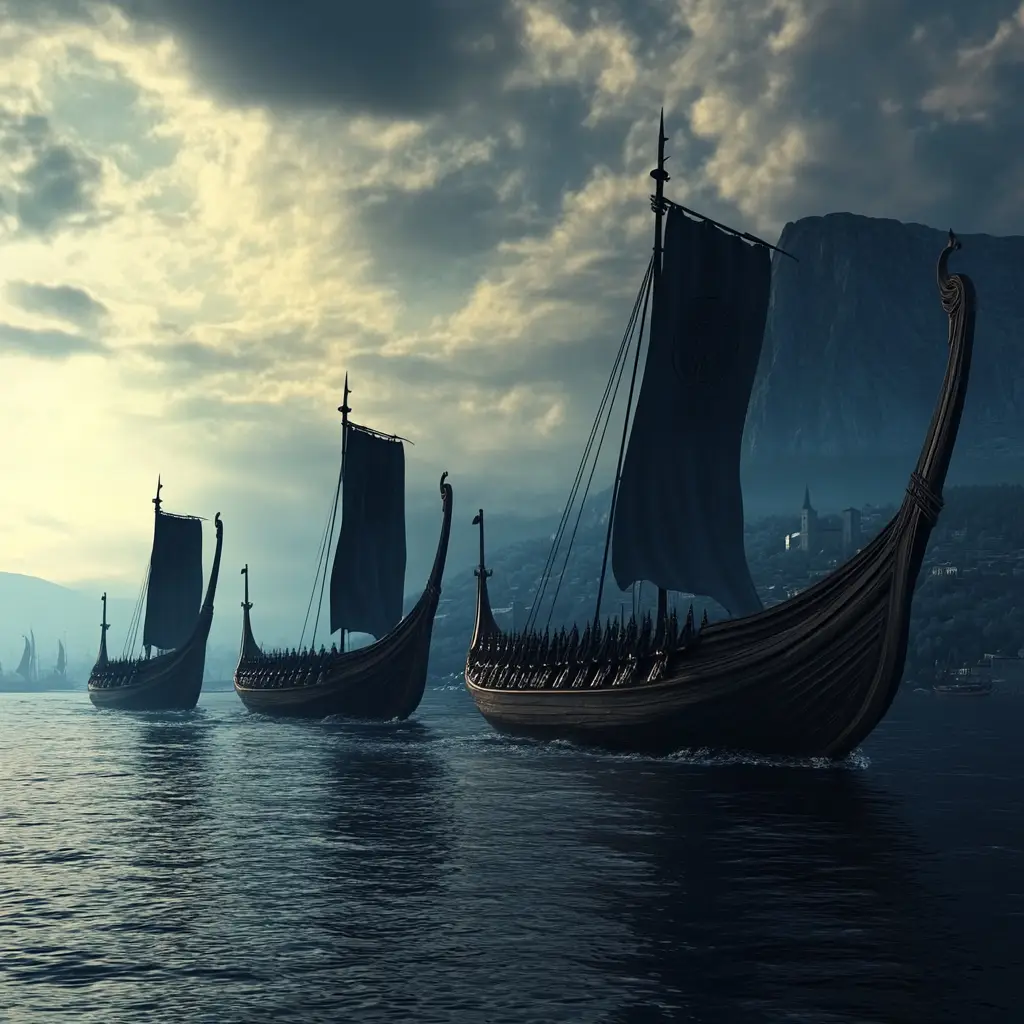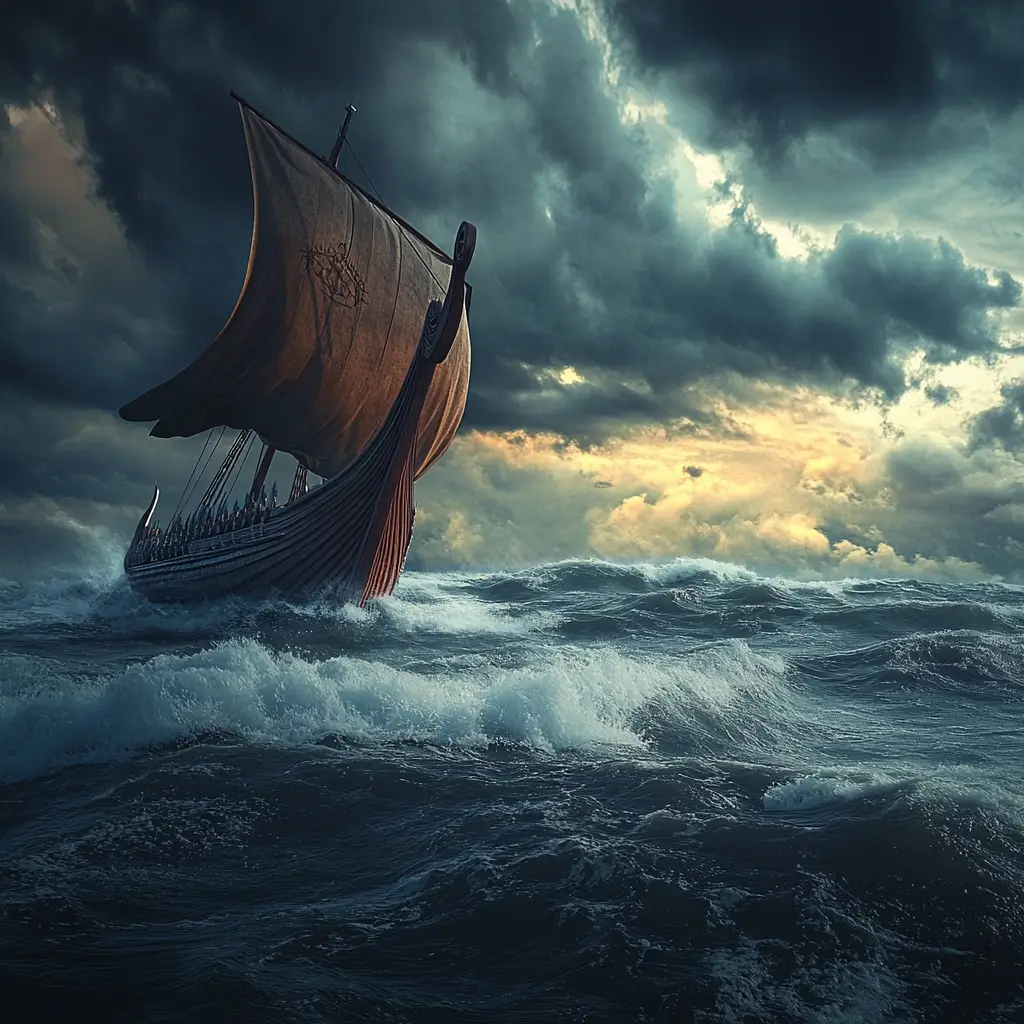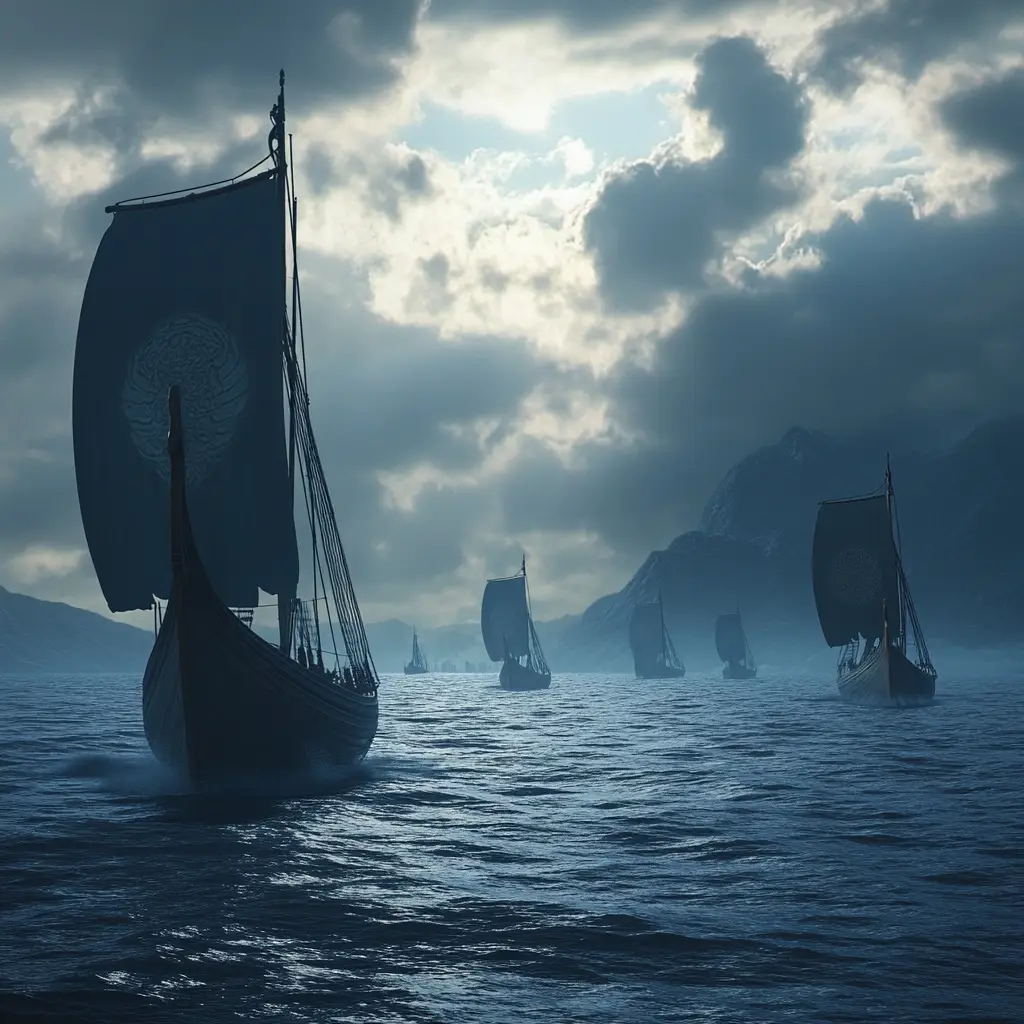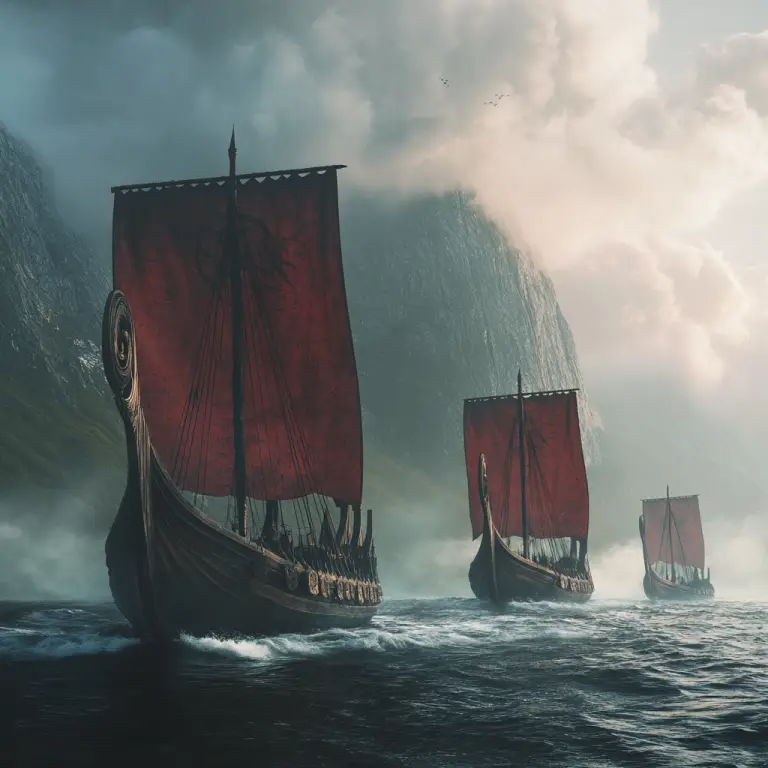Viking Ship Names: Tradition and Meaning
The Vikings were master seafarers whose ships carried them across vast distances for trade, exploration, and conquest. These vessels were more than just modes of transport; they were symbols of status, power, and identity. It was common for Viking ships to be named, much as one might name a beloved steed or a weapon, with names reflecting their owners’ ambitions, beliefs, or sense of humour.
Types of Ship Names
Animal Names
Vikings were close observers of the natural world, and many ships took their names from animals admired for strength, speed, or ferocity. Examples include:
- Orm (Serpent), evoking speed and menace
- Hrafn (Raven), connected to Odin and thought to bring wisdom and guidance
- Hafhest (Sea Horse), symbolising stamina on the waves
- Ulf (Wolf), referencing a cunning and dangerous hunter
Mythological or Divine Names
Vikings had a deep respect for their gods, and ships were sometimes named to honour them or ask for their favour:
- Odin’s Gift, to seek the All-Father’s protection
- Freyja’s Blessing, appealing to the goddess of fertility and love
- Mjölnir, the hammer of Thor, suggesting a ship as unstoppable as a lightning strike
Names of Power and Glory
Some ship names were chosen to boast of their owner’s ambition or to project strength:
- Drakar (Dragon Ship), referring to the carved dragon-head on the prow and a fearsome presence
- Blóðrefill (Blood Banner), a bold warlike name
- Sigurfari (Victory Traveller), declaring the captain’s intent to conquer
- Havørn (Sea Eagle), showing mastery of both air and sea
Fortune and Prosperity
Vikings were also traders, and ships involved in commerce might bear more peaceful or optimistic names:
- Gullfari (Gold Traveller), suggesting a profitable voyage
- Silfrhrafn (Silver Raven), combining wealth with a symbol of luck
- Friðfari (Peace Traveller), perhaps chosen to reassure trading partners
Ship Naming Traditions
Naming ceremonies could be quite elaborate. In some accounts, a ritual sacrifice might be made to dedicate the ship to the gods, ensuring its safety and success. Carvings and runic inscriptions bearing the ship’s name would be added to the prow or along the hull, giving the vessel an identity and linking it to its owner.
The sagas also preserve ship names, showing how important they were to Viking identity and storytelling. For instance, in the Saga of the Greenlanders, the ship Gaukstad is remembered for its voyages of discovery.
A ship’s name was not only practical, helping a fleet keep track of vessels, but it also told a story. It marked the ship as a living part of the crew’s legend and as a witness to the voyages, battles, and trades that shaped Viking society.



